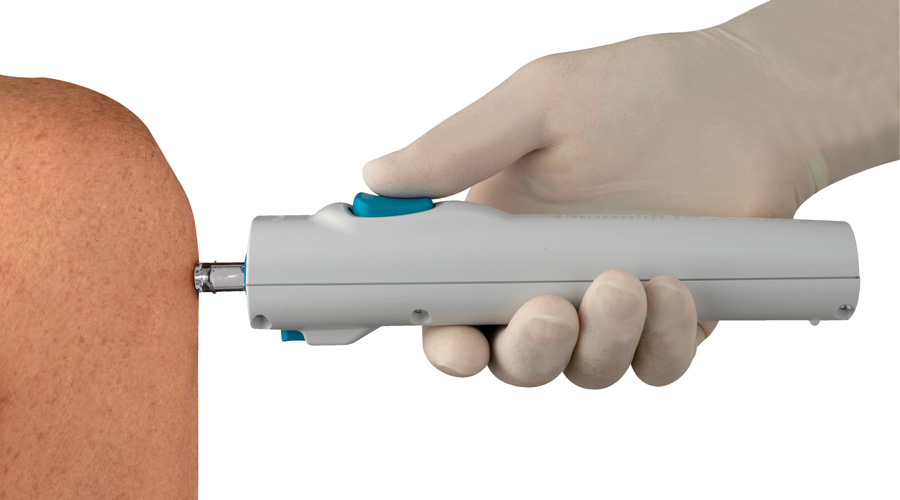Let’s face it. Patients hate getting the flu shot.
Some of them are sensitive to needles, others are scared and some don’t think the pain is worth it.
Imagine how relieved they’d be if they knew your pharmacy provided alternative ways to administer the flu shot.
Flu shot alternatives are already on the market and more are coming.
Here’s a breakdown of the flu shot alternatives your independent community pharmacy needs to know.
The flu shot alternatives available now
Nasal spray
Nasal spray was all the rage in recent years. Finally, a device that could administer the flu vaccine without pain or inconvenience. Just a spritz up a child’s nose and off they go, immune to a dangerous illness. It quickly became the favorite option among parents.
But nasal spray got some bad news this year. The CDC reported that in 2016 the spray was almost completely ineffective. It advised against using the nasal spray vaccine for the upcoming flu season.
The FDA still approves the nasal spray for people between the ages of two and 49, despite the recommendation by the CDC.
So, if patients still want the nasal spray even after you inform them of its ineffectiveness, you can legally provide it.
The positive: Completely pain-free
The negative: Ineffective
Jet injectors
With nasal spray out of commission, patients who don’t like needles will be looking for other options. And there is one: a jet injector.
The needle-free injector delivers the vaccine through a high-powered, concentrated jet of fluid about the size of a mosquito bite.
The power of the stream can penetrate the skin and can reach the blood without the invasiveness of a physical needle. And the injection is lightning quick, lasting about one-tenth of a second. But that high pressure still causes some pain, even though there’s no stab from a needle.
So, why doesn’t everyone get a jet injection?
The cost is much higher than your traditional needle and syringe. As the technology continues to develop and become more prevalent, prices will likely drop. But for now, patients have to shell out extra cash for a device that hurts almost as much as the needle.
The positive: Quick; no needle
The negative: Pricey
The flu shot alternatives that are coming soon
Microneedles
Would you rather be stabbed in the arm by one giant needle or tons of tiny needles?
At first, those sound like equally terrible choices, but one option is more pain-free than the other.
Microneedles are likely your best chance at a pain-free flu vaccine.
Patches are being developed that contain one hundred needles less than a millimeter long. Each needle contains a dose of the flu vaccine, which releases when the needles dissolve into the skin. The patch, roughly the size of a small bandage, activates through pressure once it’s placed on the arm.
These patches aren’t available yet, but they’re close. One version developed by Georgia Tech’s Laboratory for Drug Delivery was tested in a clinical trial. None of the recipients contracted the flu after using the patches, but the participants said they experienced redness, itching and tenderness.
All that news means there’s needle- and pain-free flu vaccination on the horizon.
The positive: Painless; affordable
The negative: Still in development
Help your patients avoid the needle, and they’ll give you their flu shot business.
How to Make Immunizations a Pharmacy Profit Center
Discover how to make immunizations a major source of profit for your business. Learn proven strategies and insights from pharmacy owners who’ve turned their pharmacies into immunization destinations, including 20 practical tips to reap routine profits from your program. Read the story
A Member-Owned Company Serving Independent Pharmacies
PBA Health is dedicated to helping independent pharmacies reach their full potential on the buy-side of their business. Founded and run by pharmacists, PBA Health serves independent pharmacies with group purchasing services, wholesaler contract negotiations, proprietary purchasing tools, and more.
An HDA member, PBA Health operates its own NABP-accredited warehouse with more than 6,000 SKUs, including brands, generics, narcotics CII-CV, cold-storage products, and over-the-counter (OTC) products — offering the lowest prices in the secondary market.













